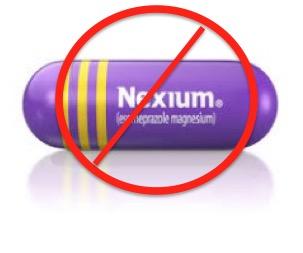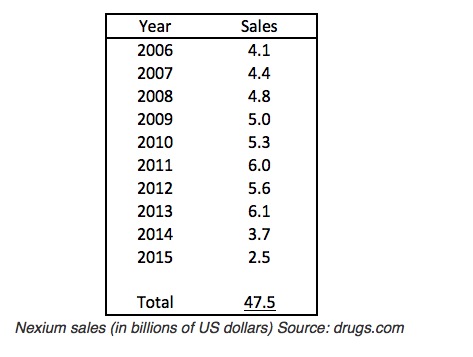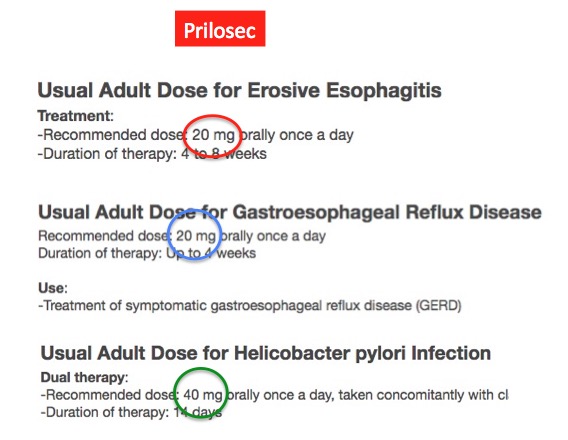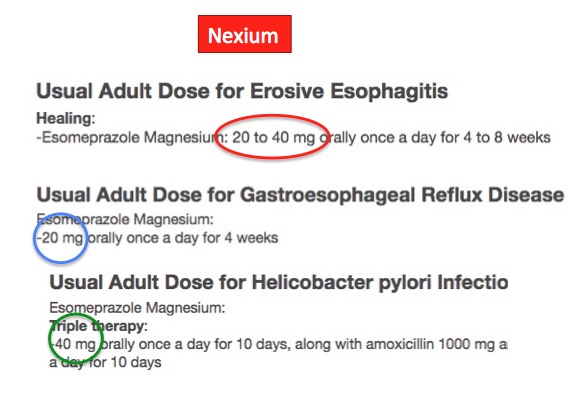
I am usually supportive of the pharmaceutical industry (1). People who reflexively criticize it have no idea how difficult and expensive it is to get something from the lab to the pharmacy. Also, many people think that drug companies don't provide innovation, and do little more than manufacture something that the NIH or a university came up with. This could not be more wrong. Pharmaceutical companies have discovered and developed drugs that have had an enormous impact on human health. They do all the heavy lifting.
But, there are exceptions. For example, AstraZeneca marketed a drug that should have never been approved in the first place: Nexium. They did it solely for money—without any benefit to society— and it has sure worked out well for them. It made AstraZeneca almost $48 billion during the past decade, without any innovation or benefit to people who had previously been taking Prilosec to control their heartburn.
They didn't deserve a penny of it. Instead, the "purple pill" marketing plan was brilliant.

Following is the story of how the company was able to get away with this.
First, whenever you see a drug name starting with "Es," it is time to be suspicious:
Omeprazole (Prilosec)
Esomeprazole (Nexium)
Aside from the "Es" in the second compound, the names are identical, which makes perfect sense, since the two drugs are essentially the same. But there is one tiny (and usually insignificant) difference that enabled AstraZeneca to replace its Prilosec patent, which ran out in 2001, with Nexium (2).This requires a little bit of chemistry but if you are a reader here, you can probably follow along and learn about optical isomerism.

An example of an asymmetric molecule. The carbon atom is the gray sphere. Source: Chemtube3D
Any molecule that contains a carbon atom (3) that has four different substituents (atoms, groups, rings...) bound to it is, by definition, asymmetrical. In the figure above, the carbon atom (gray) is attached to four different substituents, the spheres shown in red, blue, yellow, and green. Although chemically identical—the two molecules will have the exact same properties (melting point, boiling point, solubility in water...)—they are not identical in every way.
Asymmetric molecules exist in two forms (4) called enantiomers - mirror images of each other. They have the same substituents on carbon, but it is impossible to superimpose one enantiomer on another—the acid test for identity.
This explains the "Es" prefix.
To distinguish one enantiomer from another one is called the "R" form, the other the "S" form. The "S" is why the generic name for Nexium is Esomeprazole. It is simply Prilosec with the "R" form removed. Most asymmetric chemicals are a 50-50 mixture of R and S (6). This is called a racemate (or racemic mixture). A simple example is a 50-50 mixture of R- and S-lactic acid lactic acid:

Now we can take a look at why Nexium was a rip-off. Although instruments like a mass spectrometer or NMR cannot tell the difference between R and S, your body can. Almost inevitably, when a drug is a racemic mixture, one enantiomer will be the active species, while the other will be inactive and just going along for the ride. Thus, a 100 mg pill of a racemic mixture (Prilosec) will contain only 50 mg of active drug. But a 100 mg dose of a single enantiomer (Nexium) contains 100 mg. So, a single enantiomer will deliver twice the effective dose of the racemate.
So, did Nexium represent a $48 billion improvement over Prilosec? Not really, but there are web sites where numerous people have written that Nexium worked better than Prilosec for them. And, they are no doubt right. The dosing schedule for Prilosec shows why:

And for Nexium:

Although the dosage of the pills (above) is the same (colored circles), the people who are taking Nexium are getting twice the effective dose than those who are taking Prilosec, so it makes perfect sense that they feel better. But, instead of taking one purple pill people with heartburn, they could have taken two generic non-purple pills to get the same effect and saved $48 billion. This is innovation?
No, it is not. This was a money grab by AstraZeneca. They picked a pretty color, ran relentless commercials, and managed to convince patients and doctors that the "purple pill" was somehow better. Except it isn't.
Nonsense like this gives the whole industry a bad name. AstraZeneca somehow managed to convince the US Patent Office that Nexium was substantially different from Prilosec, and thus should be granted its own patent, along with 20 years of protection (7). I don't get it, and if I'm in the patent office there is no way this gets by me.
Purple pill, my a##.
Notes:
(1) Seriously, when I defend this chemistry or medicine people assume I must be a "shill for Big Pharma," but the industry tossed out my sorry ass (along with tens of thousands of others) out in 2010. I defend the industry when the science is right.
(2) A patent gives a drug company the exclusive right to sell a product until the patent expires. It does not give the company permission to sell the product. This comes from the FDA. The protection (20) years starts when the patent is filed, not when it is approved. The period of exclusivity is usually around ten years.
(3) Chemicals that contain sulfur bound to three different substituents (rare) are also asymmetric (for reasons you do not want to know. Your head would explode). Prilosec/Nexium happens to be one example of this. Prilosec was a racemate (RS), and Nexium is a single enantiomer (S).
(4) The common analogy to illustrate enantiomers is your hands. They look the same, but you cannot superimpose one hand on the other. Your hands are also mirrored images of each other.
(5) The designation of either R or S is based on a rather complicated system of nomenclature. If I try to explain this, you will hang yourself.
(7) The strategy behind Nexium is called patent extension—a strategy to increase the amount of time during which the company that made the initial discovery has a "monopoly" on a particular drug, in this case, one that is essentially identical.



